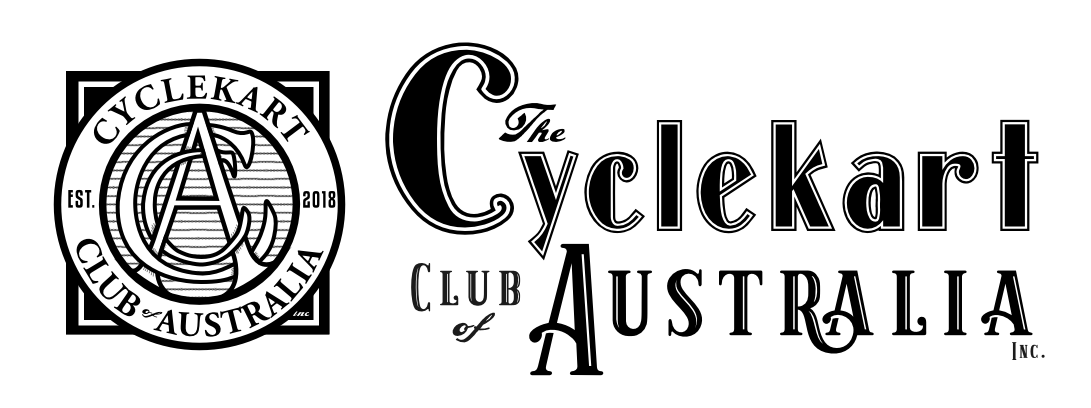The specifications for a CycleKart are as follows:
Note: Items in italics are the additional changes that are planned to be introduced under Cyclekart Club of Australia (CCA) guidelines. We have added them in for clarity so that anyone building a CycleKart can compare them to the existing guidelines and also pre-empt those upcoming changes before they happen.
"The Guidelines"
- Inspired by pre-war racing cars. The design can be based on a specific car, or built in the spirit and style of cars that were raced in the pre-war era.
- Wheel track not more than 1000mm (measured between centre of contact patches)
- Wheelbase typically about 1675mm and normally less than 1800mm
- Engine
- Single cylinder, 6.5 hp Honda OHV engine or clone (the GX200).
- Alternately an electric motor may be used (48V, nominal 3kW, 5kW peak).
- Engines may be modified but power is limited to 10hp.
- Rarely, approval may be given by the CCA to use a different engine, but not in any circumstance where this results in more power.
- Wheels
- 17” wire spoke wheels (e.g. Honda ‘postie bike’ or similar / pit bike wheel).
- 18” permitted for Edwardian era builds where appropriate. (Please contact the Committee before embarking on an Edwardian build).
- Maximum rim width 1.85” (Exemption for rear wheel on three-wheel cars)
- Tyres: typically 2.5/2.75” but maximum of 3.25”
- Brakes: Rear (driven axle) brakes only. (No front brakes allowed).
- Can be mechanical or hydraulic.
- If cables are used to operate the main brake mechanisms, then the minimum cable diameter is 1.8mm and a secondary cable is to be fitted in case of cable failure.
- It must be possible to lock the brakes on (e.g. handbrake or hydraulic line lock) or have a separately operated ‘parking brake’.
- In both cases the 'parking' brake must be able to hold the CycleKart under engine load.
- Suspension:
- Front suspension schemes should follow the inspiration car. This is usually leaf springs on a beam axle.
- Typical suspension schemes are as follows
- 2 leaf springs running along the car,
- 2 1/4 elliptic springs running along the car
- Single transverse leaf spring.
- Almost all cars in the period use beam axles. A handful of potential inspiration cars have coil springs and/or independent front suspension through, for example a sliding pillar arrangement (Morgan and Lancia are most notable examples).
- Where the CycleKart is not following a specific inspiration car, leaf spring suspension shall be used.
- Period style dampers can be used (they might not do much, but they can look great)
- Transmission system free choice - CVT, centrifugal clutch, belt clutch all acceptable.
- No manual clutch or manual gearbox
- A reverse gear may be fitted if desired.
- Rear axle design is free choice - one-wheel drive, fixed axle, differential are all accepted
- Weight
- Aim for 100-125kg (maximum recommended weight 150 kg - no driver, full fuel)
- Electric CycleKarts are weighed without batteries. Maximum weight for battery packs is 32kg.
- Cost
- Open cheque-book builds are not really in the spirit of CycleKarting. Whilst other groups might put a specific limit on what a CycleKart should cost, we prefer to trust that people are doing the right thing.
- We encourage builders to employ thriftiness when sourcing parts. Repurposed items are ideal and fit the general style and ethos of pre-war motoring.
- We also encourage that each CycleKart should be at least 50% built by the owner. If you cannot weld or have no idea on how to get started, reach out to the community and you will find that there are plenty of people willing to help you out. Building your Cyclekart is where most of the fun lay and a good way to forge new friendships.
| Version | Date | Comments |
| V 1 | 13.09.2018 | Initial Version |
| V 2 | 12.02.2024 | Updated to align with CCA guidebook |
| V 3 | 04.03.2024 | Added CCA guideline comparison |


